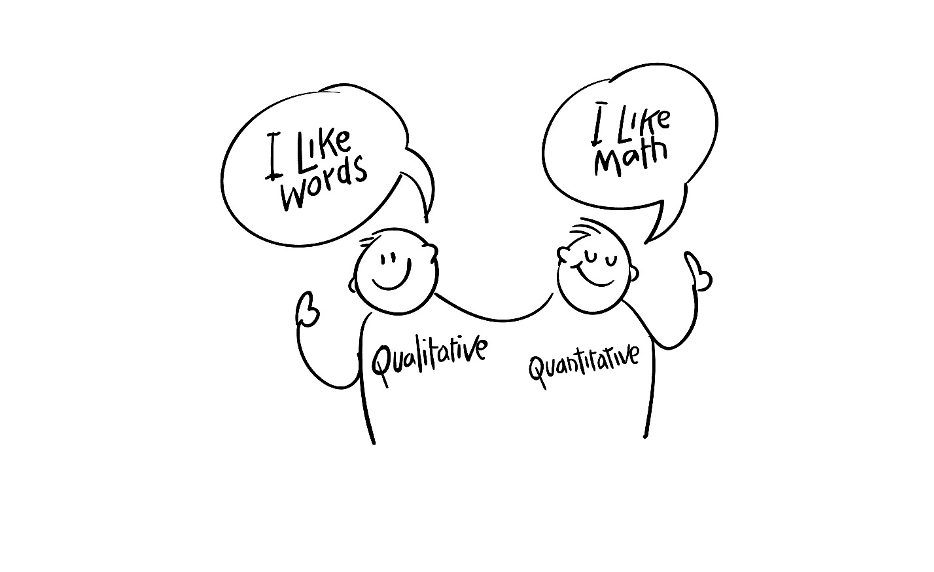How to Use User Experience Research Methods to Nail Software Projects
UI/UX Design
User Research

User experience research methods… Let’s go!!
In the business of software design, creating a product that solves a user’s problems and provides a great user experience (UX) is at the very top of the priority list. To create such a product, a design team requires a deep understanding of the problem they are trying to solve. So, It is crucial before words like MVP and prototypes are carelessly thrown around that time is allotted to understanding the user’s problem. That’s where user research comes in.
The benefits of UX are now well recognised and investment in user research is growing because of the clear and demonstrable impact it has on ROI. For example, the Interactive Design Foundation finds that conducting user research can cut product development times by 33-50%. Yes. It can cut your product development timeline in half.
The scope of user research is huge. There is a multitude of methods and theories out there but there are two words that come up again and again:
Qualitative & Quantitative
Apart from being a bit of a mouthful to say, these are the two central concepts that hold together any good research project. ‘Quant’ and ‘Qual’ require very different activities and consequently produce very different outcomes. But doing both are necessary to see better results from your user research. Let’s take a look at them both in more detail.
Qualitative research
Qualitative research aims to answer the what and why questions in your user research. It finds meaning by identifying the attitudes and behaviours of users. Qual research is flexible and open-ended in nature; It lends itself to examining social realities and helps contextualise real-life experiences. In user research it has several goals:
To uncover problems with a product or service.
To investigate attitudes, perceptions and why users think the way they do.
To find new perspectives by collecting feedback on a problem.
To attribute meaning to certain behaviours.
Because of its style, qualitative research lends itself to understanding the user’s perspective by fleshing out what they do, think, say, and feel. Because the data is often contextually rich, qualitative research methods only require around five participants to start collecting valuable insights into a product.
N.B Don’t just pick anyone to partake in your research. Make sure your small group of participants are actual users of your product. If not, try to find ‘would-be’ users of your product using your user personas.
Popular qualitative research includes:
User Interviews
Qualitative Usability Testing
Ethnography
Field research
Site visit
Focus Groups
User Shadowing
Quantitative research
Quantitative research answers the how much and how many questions in user research. Quant research finds its strength relying on accurate numerical data and requires a more structured approach. The beauty of quantitative data rests in its ability to be easily replicable. A well-designed quantitative study will often be representative of the whole; it is well suited to making comparisons and identifying patterns. The goals of quantitative research are:
To discover the scale of a specific problem.
To compare alternative solutions and prototypes.
For Benchmarking UX goals e.g. It can demonstrate if a product or service is getting the right results.
To be successful, quantitative research requires a large sample of respondents to paint a clear picture. Each method requires different levels of participation, so be sure to research before you dive in. One major benefit of quantitative results is reliability. Essentially if you ran a quantitative study on two samples of the same demographic, it is likely similar results would emerge, provided the correct controls were in place.
Common quantitative methods include:
Analytics
A/B Testing
Surveys
Questionnaires
Quantitative Usability Testing
When qualitative meets quantitative: The mixed-method approach
Unsurprisingly, everyone has a preference. Without getting into a complex philosophical debate, people naturally gravitate towards one or the other. But in the interest of conducting good user research, we’ll leave our opinions at the door and listen to what works best for the user.

If only it were that simple. Image Credit: https://jhargrave.medium.com/
Qual and Quant don’t happen in isolation. They exist on a spectrum and the best solution is finding the middle road on that spectrum with a mixed-method approach (MMA). An MMA has numerous benefits. It ensures that you are collating data from several different sources so the outcome of blending quantitative and qualitative will generate a holistic view of the problem.
For example, you could conduct a handful of qualitative interviews to find out how your users perceived a specific feature of the product you offer. You will build out a rich contextualised understanding of questions, problems and objections a user has. Afterwards, you can use the qualitative data to build a questionnaire that will provide quantitative validity by confirming the finding of the interview.
Of course, this is just one example of an MMA and there are many ways to structure a UX research project. There is no one-size-fits-all solution. However, using a mixture of quantitative and qualitative methods listed above is a good starting point.
Never stop doing user experience research
One final consideration is how user research happens in the wider process of product development:
It should be constant. User Research has a place at every stage in the development process.
Most user research methods fit nicely into a certain stage of development. A/B testing, for example, fits perfectly alongside building prototypes whereas field research may lend itself to early stages of development. Analytics can be tracked the whole way through, using UX benchmark metrics like page views, bounce rates, and the cost per conversion.

Got an idea? Let us know.
Discover how Komodo Digital can turn your concept into reality. Contact us today to explore the possibilities and unleash the potential of your idea.

Sign up to our newsletter
Be the first to hear about our events, industry insights and what’s going on at Komodo. We promise we’ll respect your inbox and only send you stuff we’d actually read ourselves.






